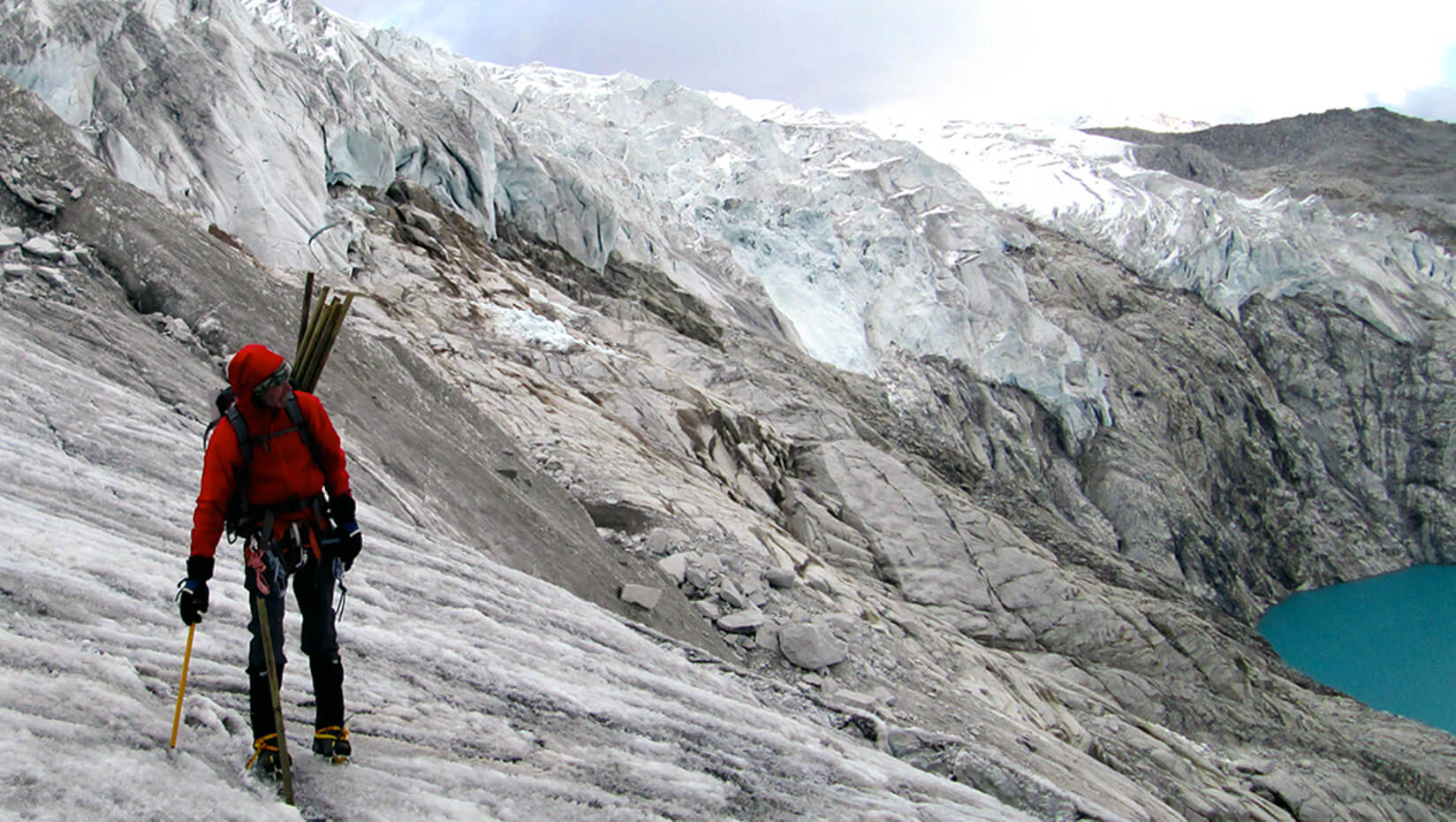
Putnam blazes ice age career path
Aaron Putnam has been awarded one of most prestigious grants for an early-career scientist.
Early career indeed.
Putnam has been on the job at the University of Maine for about eight months as the George H. Denton Assistant Professor in the School of Earth and Climate Sciences.
In May, he’ll take the reins of a $591,000 Faculty Early Career Development (CAREER) grant from the National Science Foundation.
Over five years, using surface-exposure and radiocarbon dating techniques, Putnam will develop a chronology of mountain glacier retreat during the last great global warming that ended the ice age in the interior mountains of Asia approximately 20,000 to 11,000 years ago.
“Chronology is everything in Earth sciences,” he says. “It is essential to know when and how rapidly regions around the planet warmed in order to diagnose what mechanisms led to the warming, and to test available hypotheses.”
For Putnam, who earned his doctorate in Earth sciences in 2011 at UMaine, the last glacial termination represents a spectacular natural experiment.
It was the last time atmospheric CO2 rose by a substantial amount prior to the industrial period and clues to this event were imprinted onto the landscape by the glaciers, which are incredibly sensitive to climate change.
By examining the signature of the last great warming that drove mountain glacier retreat in the interior of Asia, Putnam seeks to understand the role of radiation-forcing factors — including greenhouse gases and orbital variations — in driving the Earth’s climate.
Putnam chose the glaciated mountain ranges of interior Asia because the air temperature in the center of the largest continent is dominated by radiative heating of the landmass. Moderating ocean effects have little influence.
Putnam and his team will venture into the Altai Mountains of Mongolia and the Himalayas of China to map and date landforms that document retreat of glaciers at the close of the last ice age.
He’ll explore the role of carbon dioxide and “calibrate” how ice melts and water supplies are reduced in a warming climate. That, he says, will inform understanding of processes that propel the Earth out of an ice age.
“If our chronology shows that mountain glaciers receded at the same time as the Antarctic ice cores recorded a ~50 percent increase in atmospheric CO2 concentrations, then rising CO2 could be regarded as a viable candidate for what ended the last ice age,” he says.
“On the other hand, if our chronology shows that the glaciers receded before, or more rapidly than CO2 rose, then it would suggest that other factors were involved, such as changes in Earth’s orbit and/or internal reorganizations of the ocean and atmospheric circulation systems.”
Putnam has been curious about the natural world and unsolved mysteries for much of his life.
His interest in climate science was catalyzed in high school during a scientific cruise through the Arctic Ocean aboard the U.S. Coast Guard icebreaker Polar Sea. He worked with scientists from the U.S. Army Corps of Engineers studying physical, chemical and biological properties of Arctic sea ice.
“I was living in Barrow, Alaska at that time, where sea-ice concentrations were undergoing noticeable year-to-year changes,” he says. “I was exposed to the importance of developing an interdisciplinary approach to understanding how the climate system works and how it can change.”
The NSF CAREER award is, in part, intended to bolster early-career scientists who exemplify the role of teacher-scholar through their research, education and integration of the two.
An important goal of Putnam’s project titled “CAREER: The Last Glacial Termination in Interior Asia” is to establish international educational and scientific partnerships.
Those collaborations will feature immersive, international, cooperative educational experiences. Putnam and UMaine undergraduate and graduate students will be joined on the project by high school students and teachers from Gary Comer College Prep, public charter school devoted to improving lives of underserved minority students from the South Side of Chicago; science journalism students at Medill School of Journalism at Northwestern University; and graduate and undergraduate scholars from Mongolian and Chinese universities.
“All students and instructors will team together to address this important problem of Earth sciences, and will learn by teaching and helping each other,” he says.
Last summer, Putnam and UMaine doctoral student Peter Strand conducted glacial geology research and collected samples in Mongolia, a landlocked nation bordered by China and Russia. He’ll analyze samples collected during that expedition for this project.
“This work allows me to explore extraordinarily beautiful and remote environments in search of clues that are trying to tell us about how the Earth system works,” he says.
Putnam will give a talk titled “The Last Great Global Warming,” at 6 p.m. Thursday, April 14, in Room 57 of Stodder Hall. His free, public presentation is the Invited University of Maine Alumni Lecture, which is part of the 24th annual Harold W. Borns Jr. Symposium.
Contact: Beth Staples, 207.581.3777
From UMaine News.
